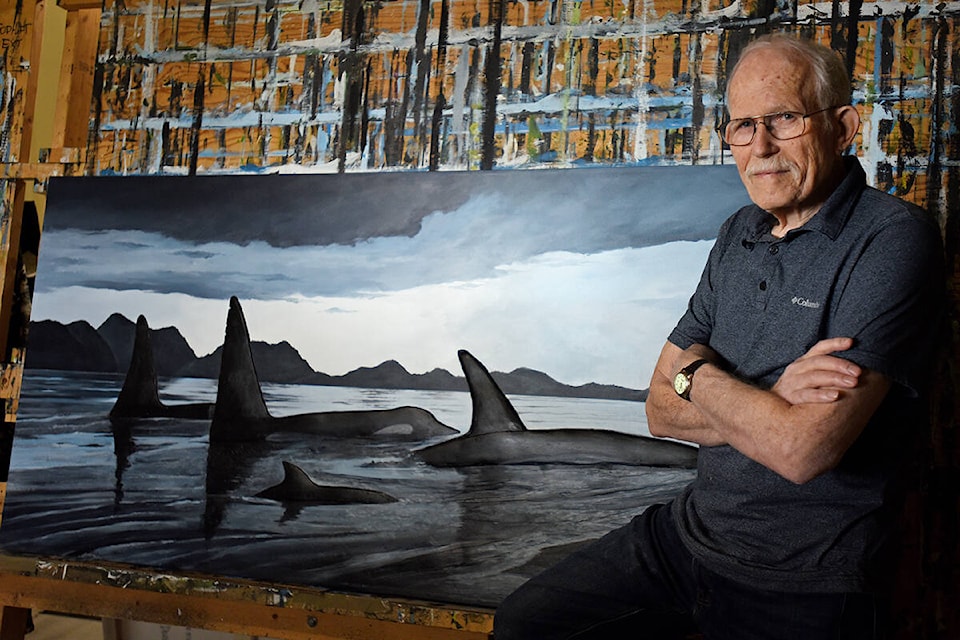- Words by Sean McIntyre Photographs by Don Denton
In spite of what he may tell you, Karel Doruyter’s high school years were anything but typical.
Working tirelessly in his home-constructed chemistry lab, the teen built hydrogen-filled balloons to which he attached messages and launched on journeys of hundreds or sometimes thousands of kilometres. He also built rockets, one of which may or may not have caused damage to the front window of his principal’s house. Then, there was the time he produced a beaker filled with nitroglycerine, a potent concoction that required assistance from local RCMP officers, who set off the fiery substance in the Quesnel River near his childhood home in the BC interior. He also adopted a pair of orphaned bear cubs destined to be destroyed by a local conservation officer. Karel arranged to have the bears adopted by an animal park in Holland, where their offspring live to this day.
“I was probably a bit of a rebel that joined forces with a few other like-minded students,” he says.
Karel’s anything-but-typical childhood invariably led to a career trajectory that has been far from conformist. The 79-year-old Nanaimo-based painter’s curiosity, courage to experiment and seemingly innate problem-solving ability have served him well in a life that has seen him explore the world in both mind and body since he graduated from the University of British Columbia in 1968.
Regarding the most recent exhibition of his work, Still Standing, which ran this fall at Victoria’s Madrona Gallery (606 View Street), Karel jokingly says that the show’s theme was as much about himself as it was about the awe-inspiring landscapes and scenes he captures on canvas.
“I’m getting old and I’m still standing,” he smiles. “But the show also had to do with what we are losing. I am painting trees and animals, and they are threatened but they are still standing.”
An interest in boat design and building has enabled him to make at least 50 trips along the BC coast. He has lived and worked on Haida Gwaii, spent time in Australia and Tasmania, and travelled to the Arctic and farthest reaches of South America. Whether his paintings convey the lush grandeur of a coastal rainforest or the stark isolation of a rocky arctic mountain-scape, the size and impact of Karel’s work transport the viewer, uniting us with a world of fleeting beauty.
Flipping through a collection of photographs, Karel explains how most of his works incorporate components of the landscapes he has seen on his various journeys. He’ll take a grove of Douglas firs from one scene, combine it with distinctive rock formations from another and sprinkle in a dash of mist or twilight to complete the image.
“I still go out, and hiking around here has inspired a number of arbutus tree paintings, which have been a great hit, but I would say that 80 per cent of [my paintings] are composites,” he says.
Three-dimensionality is the most striking aspect of Karel’s paintings, a technique he’s refined over the past 20 years or so. It was through experimentation that Karel happened upon the perfect combination of ingredients to form the plaster compound used to build up the low-relief profile. Once layers are applied and left to harden, Karel attacks the plaster with sanding paper, chisels and cutting tools, digging into the material to give his landscapes their signature texture and added dimension. After this initial sculpting of the canvas, he applies a coat of gesso followed by acrylic paint.
Karel says the technique was inspired by his time working on a government study on health-care delivery for Indigenous and non-Indigenous seniors on Haida Gwaii. He says the close relationships he developed with the region’s Haida residents opened his eyes to the legacy of trauma and ongoing suffering experienced by many Indigenous Canadians. This powerful experience inspired exploration beyond his traditional two-dimensional approach as a way to convey the magnitude of this topic.
“I thought it needed to have more impact to convey the emotion and gravitas of the topic,” he says. “It took about 30 or 35 tries of different mixtures to see what would work, and then I discovered a secret ingredient, and it worked.”
Beginning with those paintings in a genocide series, the earliest of his three-dimensional tableaus were based on heavy masonite board. He lightened the pieces considerably by experimenting with wooden backboards and eventually discovered a way to marry the weight of his 3-D plaster with the lightness of canvas surfaces.
“I tried canvas and all of a sudden it worked,” he says.
Karel has long since expanded use of the technique to capture the grandeur and isolation of his landscapes, be they rooted in geographic or emotional space. The results have fostered an international clientele who have snapped up his works through galleries across Western Canada. The past year and a half, he says, has seen demand for his work reach even loftier heights. He wonders if it could be a lockdown longing for epic scenes of the great outdoors or a desire to enliven the indoor spaces to which we have been bound. Though he’s not sure how to explain the pandemic art boom, he knows the works’ popularity is a sure sign that his life of exploration and experimentation isn’t yet complete.
For further information about his work visit madronagallery.com or studiokd.ca.
Story courtesy of Boulevard Magazine, a Black Press Media publication
Like Boulevard Magazine on Facebook and follow them on Instagram



